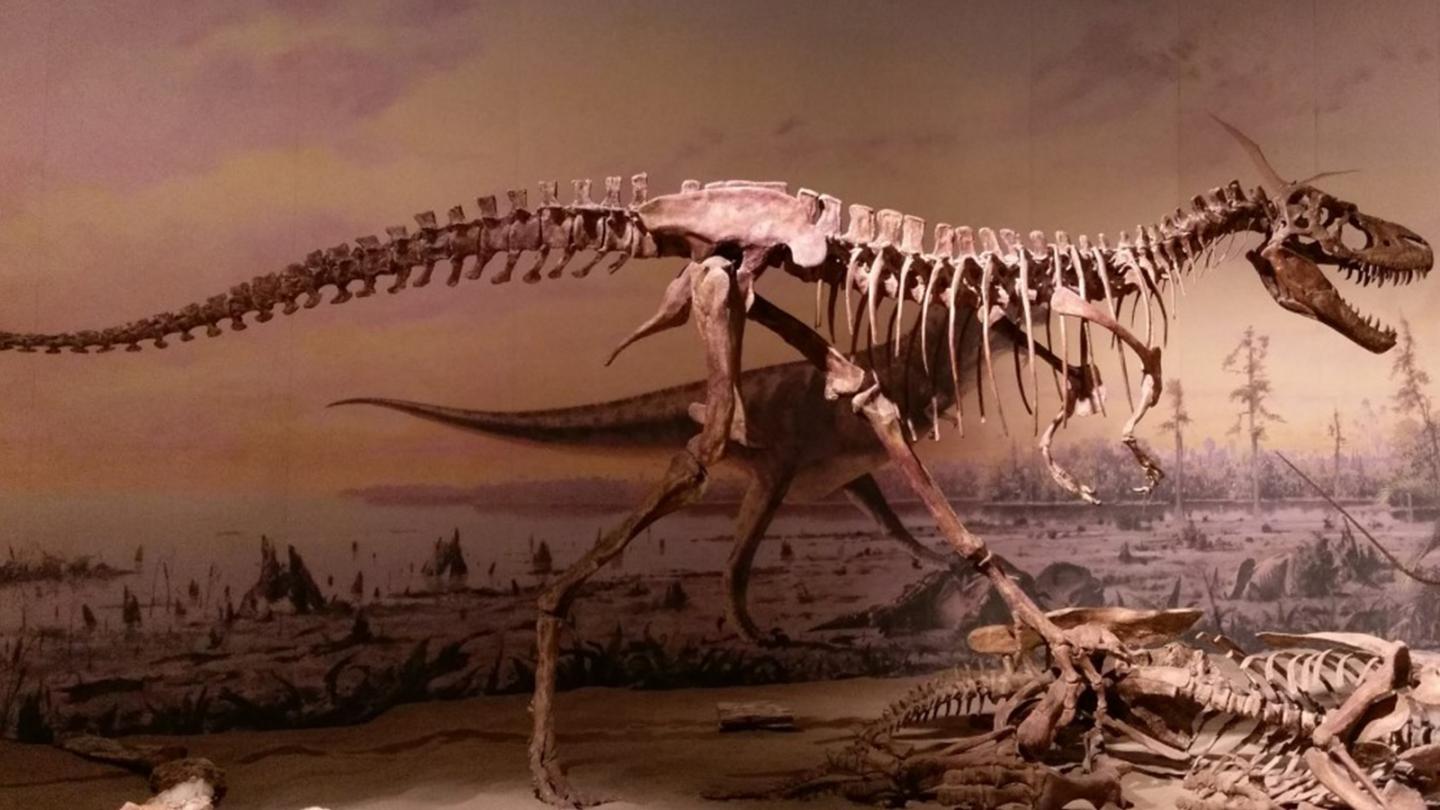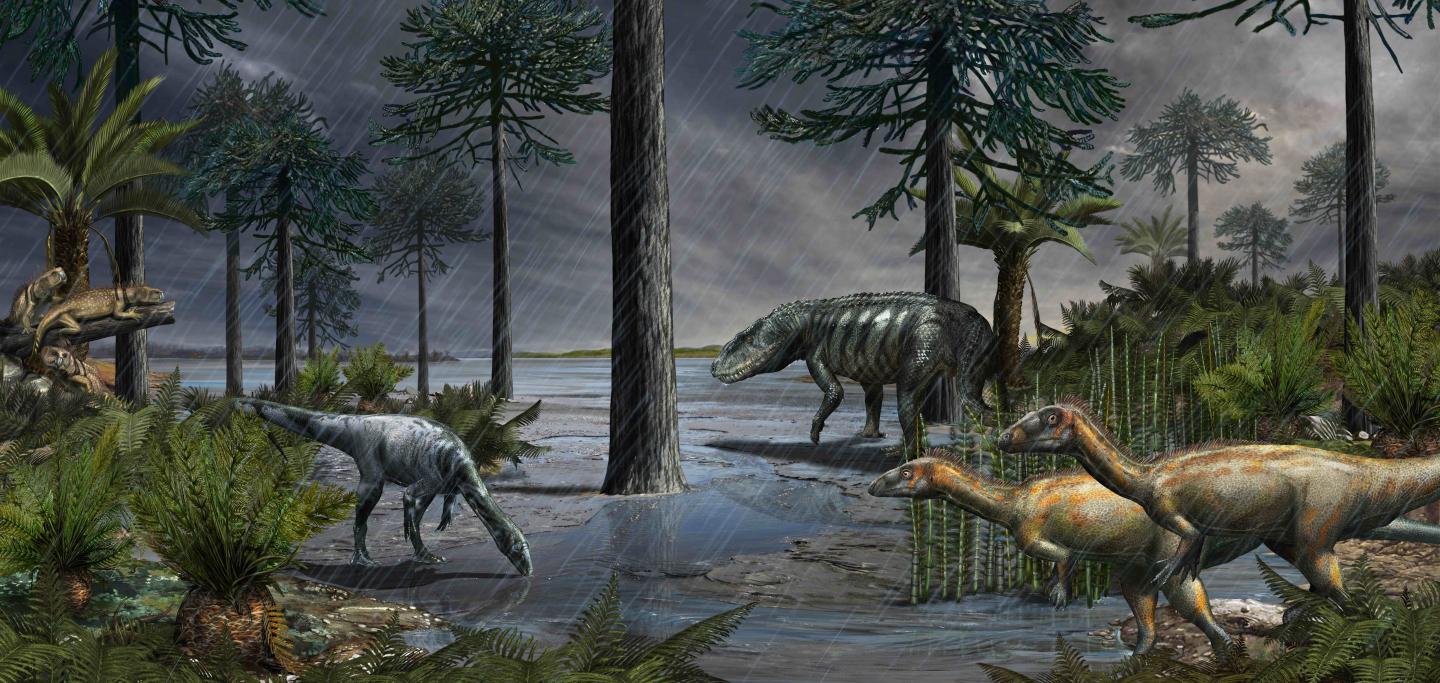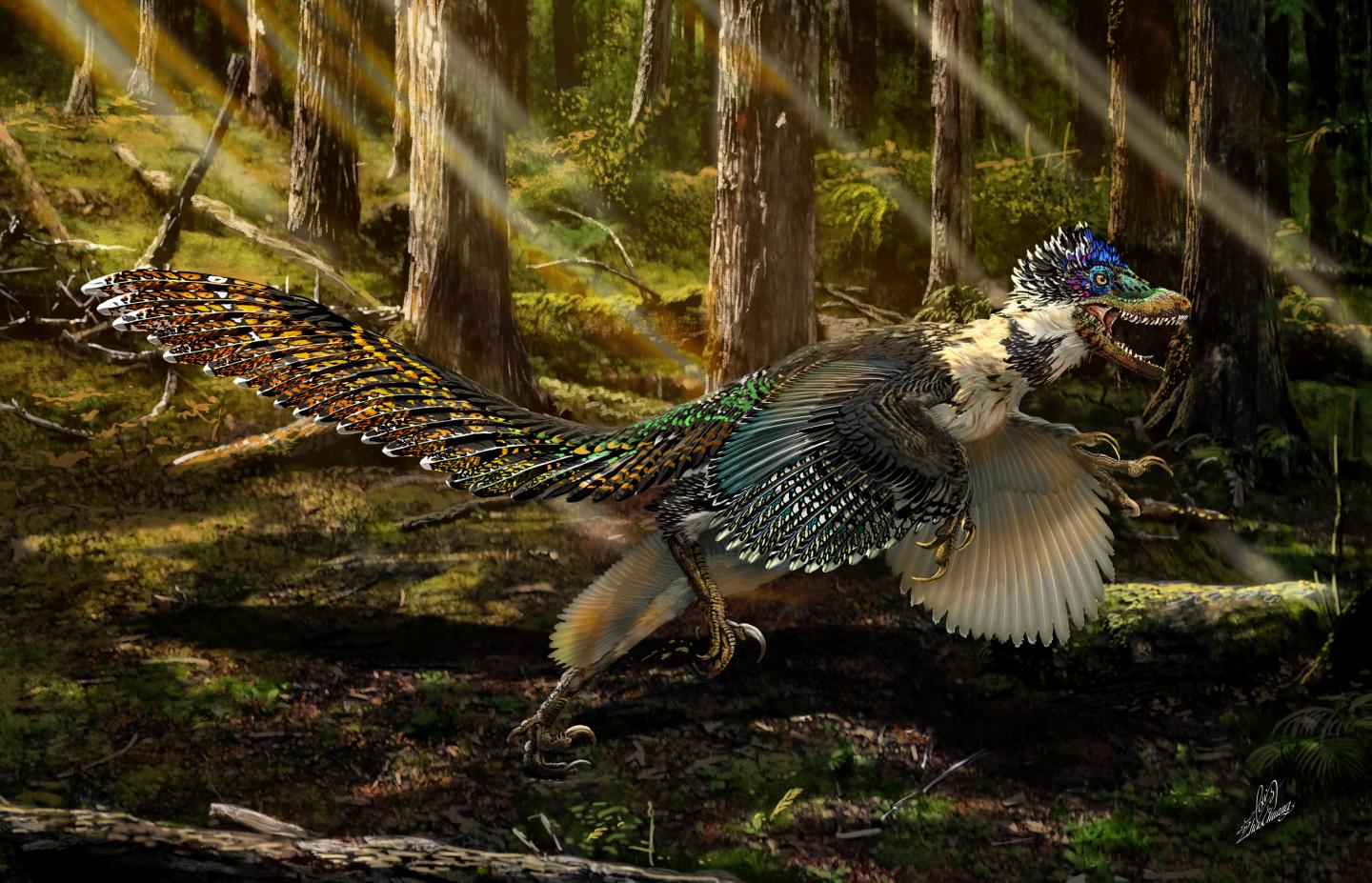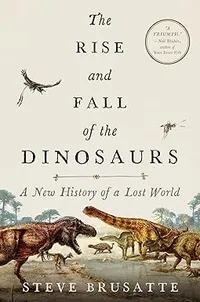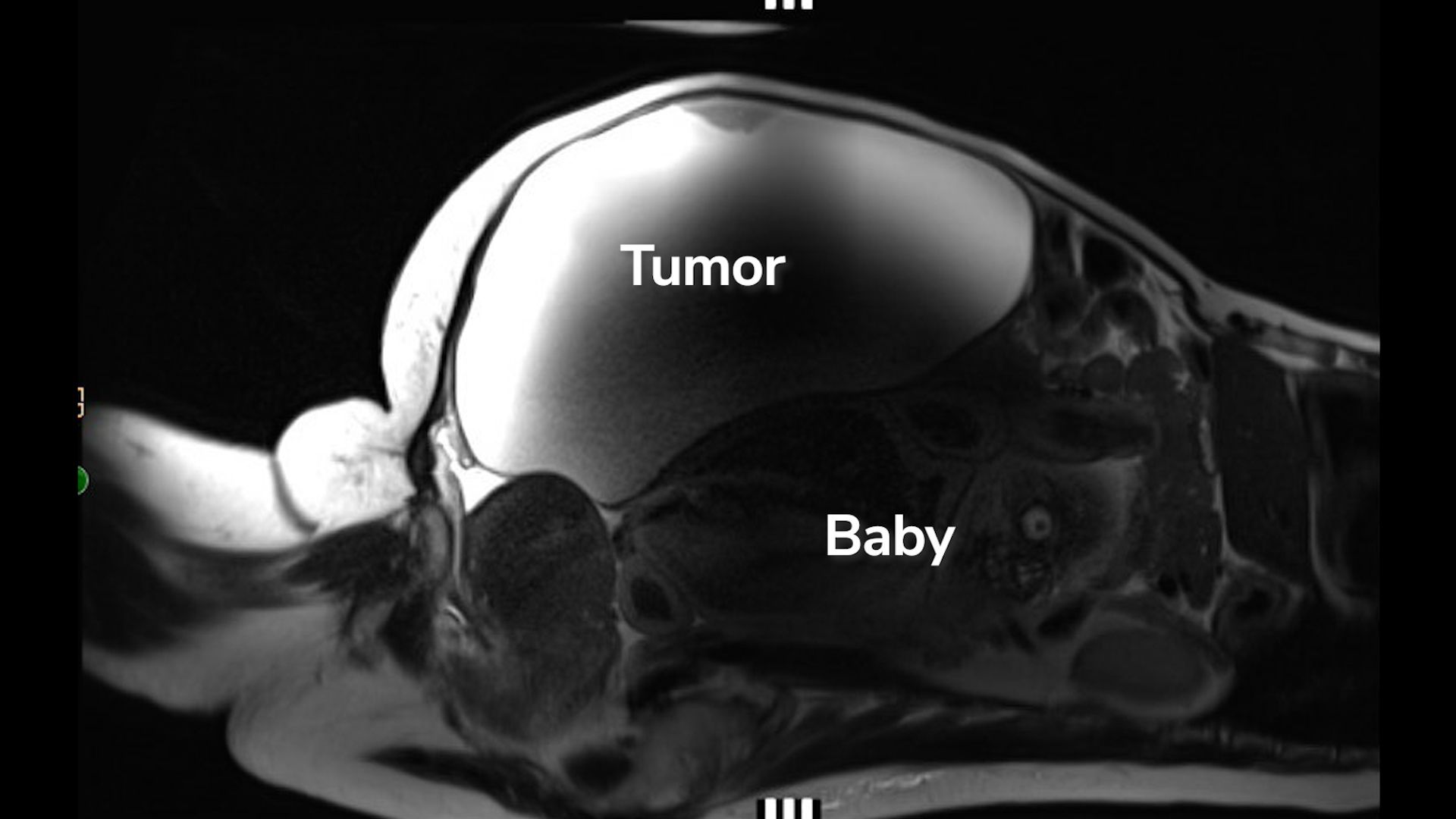A brief history of dinosaurs
Dinosaurs ruled the Earth for about 174 million years. Here's what we know about their history.

Dinosaurs were a successful group of animals that emerged between 240 million and 230 million years ago and came to rule the world until about 66 million years ago, when a giant asteroid slammed into Earth. During that time, dinosaurs evolved from a group of mostly dog- and horse-size creatures into the most enormous beasts that ever existed on land.
Some meat-eating dinosaurs shrank over time and evolved into birds. So, in that sense, only the non-avian dinosaurs went extinct. (For the purposes of this article, "dinosaurs" will refer to non-avian dinosaurs, unless otherwise stated.)
During the roughly 174 million years that dinosaurs existed, the world changed greatly. When dinosaurs first appeared in the Triassic period (251.9 million to 201.3 million years ago), they roamed the supercontinent of Pangaea. But by the time the asteroid hit at the end of the Cretaceous period (145 million to 66 million years ago), the continents were in approximately the same place they are today.
What are dinosaurs?
The oldest unequivocal dinosaur fossils, dating to about 231 million years ago, are from Ischigualasto Provincial Park in northwestern Argentina, and include the genuses Herrerasaurus, Eoraptor and Eodromaeus. Scientists are still debating whether Nyasasaurus, a genus found in Tanzania that dates to about 240 million years ago, is also an early dinosaur or a dinosauromorph, a group that includes dinosaurs and their close relatives, Steve Brusatte, a paleontologist at the University of Edinburgh in Scotland, told Live Science.
Related: Photos: Unearthing dinosauromorphs, the ancestors of dinosaurs
Whenever they first appeared, the dinosaurs' unique anatomy set them apart from other animal groups. Dinosaurs are archosaurs, a clade (different groups of animals that share a common ancestor) that includes crocodilians, pterosaurs, dinosaurs and birds. The archosaurs emerged after the end-Permian extinction about 252 million years ago. Over time, some archosaurs, including dinosauromorphs, adapted an upright posture, meaning they had legs under their bodies, rather than out to their sides.
"Sprawling is all well and good for cold-blooded critters that don't need to move very fast. Tucking your limbs under your body, however, opens up a new world of possibilities," Brusatte wrote in "The Rise and Fall of the Dinosaurs: A New History of a Lost World" (William Morrow, 2018). As archosaur evolution progressed, dinosauromorphs gained long tails, big leg muscles and extra hip bones that enabled them to move quickly and efficiently, Brusatte wrote.
Get the world’s most fascinating discoveries delivered straight to your inbox.
Some dinosauromorphs evolved into dinosaurs. The differences between the two are small, but dinosaurs' anatomy offered increased benefits, including arms that could move in and out, neck vertebrae that could support stronger muscles than before, and a joint where the thigh bone meets the pelvis, Brusatte wrote.
This unique anatomy helped dinosaurs become successful. Having an upright posture also freed the hands, allowing dinosaurs such as iguanodonts to grasp branches and carnivorous dinosaurs to claw and kill prey, Gregory Erickson, a paleobiologist at Florida State University, told Live Science. Ultimately, having free arms "allowed gliding then flight in birds," he said.
Moreover, dinosaurs were likely warm blooded, according to research on their growth rates. "When you become a warm blooded animal, you can operate 24/7," Erickson told Live Science. "You're not at the whims of the environment in terms of being active."
Initially, dinosaurs were not as diverse as the crocodile-like archosaurs they were living alongside, Brusatte noted. In fact, dinosaurs "didn't become too successful right away; the crocs ruled the Triassic, then the end-Triassic extinction hit and the dinosaurs survived and took over."
The clade Dinosauria (which means "terrible lizard" in Greek) was coined in 1842 by the English paleontologist Richard Owen, who included the meat-eating theropod Megalosaurus, the long-necked sauropodomorph Cetiosaurus and the ornithiscian Iguanodon as the first known species in the clade, according to the book "Dinosaurs Rediscovered" (Thames & Hudson, 2019).
Each of these dinosaurs, it turns out, represents one of the three major dinosaur groups.
Types of dinosaurs
As of 2021, there were 1,545 scientifically described dinosaur species, according to the Paleobiology Database. About 50 previously unknown species are described each year, meaning there's roughly one newfound species described each week, Brusatte said.
All of these dinosaurs fit into one of three groups: Ornithischia, Sauropodomorpha and Theropoda.
Ornithischia dinosaurs include beaked plant-eaters, such as Stegosaurus, duck-billed dinosaurs (also called hadrosaurs), as well as horned dinosaurs like Triceratops and armored dinosaurs like Ankylosaurus. Some ornithischians walked on four legs, while others walked on two.
Sauropodomorpha dinosaurs were long-necked, pot-bellied dinosaurs that had tiny heads and column-like limbs. This group includes sauropods (such as Diplodocus), their smaller antecedents (including Chromogisaurus) and extra-large sauropods known as titanosaurs (such as Dreadnoughtus and Argentinosaurus), which are among the largest land animals that have ever existed.
Theropoda is a group of meat-eating dinosaurs, although some (such as Chilesaurus diegosuarezi) changed their diet to be herbivorous or omnivorous. Theropods include Tyrannosaurus rex and Velociraptor, as well as birds, which evolved from small theropods.
So, how are these groups related? It's up for debate. Ornithischian dinosaurs have a backward-pointing pubis bone in the hip, earning them the name bird-hipped dinosaurs. (However, they are not the ancestors of birds; theropods are.) Meanwhile, theropods and sauropodomorphs have saurischian or "reptile hips," which are also seen in modern crocodiles and lizards, according to the book "Dinosaurs Rediscovered."
Historically, it was thought that the reptile-hipped theropods and sauropodomorphs were more closely related to each other than to ornithischians. However, a 2017 study in the journal Nature uprooted the dinosaur family tree by suggesting that ornithischians and theropods were more closely related, based on analyses of 74 dinosaur species. Shortly after, another 2017 study in the journal Nature found that neither family tree, as well as a third that is rarely considered, is statistically significant from the other, meaning all the suggested family trees are equally plausible until more evidence comes forth.
When did dinosaurs live?
Dinosaurs lived during most of the Mesozoic era, a geological age that lasted from 252 million to 66 million years ago. The Mesozoic era includes the Triassic, Jurassic and Cretaceous periods.
Dinosaurs arose from small dinosauromorph ancestors in the Triassic period, when the climate was harsh and dry. They faced "competition from the croc-line archosaurs for tens of millions of years, [but] finally prevailed when Pangaea began to split," Brusatte told Live Science. At this time, volcanoes erupted along the cracks of the supercontinent, causing global warming and mass extinction, he said.
During the Jurassic period (201.3 million to 145 million years ago), dinosaurs rose to dominance and some grew to huge sizes. For example, Vouivria damparisensis, the earliest titanosaur, dates to 160 million years ago. It weighed about 33,000 lbs. (15,000 kilograms) and measured more than 50 feet (15 meters) long. Iconic dinosaurs from this period include Brontosaurus, Brachiosaurus, Diplodocus and Stegosaurus. During the Jurassic, flowering plants evolved and birds, including Archaeopteryx, first appeared. There was "a small extinction at the end of the Jurassic that we still know little about," Brusatte said.
In the Cretaceous period, dinosaur dominance continued as the continents moved farther apart. Famous dinosaurs from this period include T. rex, Triceratops, Spinosaurus and Velociraptor. The largest dinosaurs on record, including Argentinosaurus, date to the Cretaceous. The Cretaceous period ended with the Cretaceous-Tertiary (K-Pg) extinction event, when a 6-mile-wide (10 kilometers) asteroid collided with Earth, leaving an impact crater more than 110 miles (180 km) in diameter in the Yucatan Peninsula of what is now Mexico.
The impact area, known as the Chicxulub (CHEEK-sheh-loob) crater, has evidence of "shocked quartz" and small glass-like spheres known as tektites, which form when rock is rapidly vaporized and cooled — geologic clues that a space rock struck there with incredible force, Betsy Kruk, an associate paleontologist with Paleo Solutions, a paleontological consulting company based in California, previously told Live Science. Chemical analyses from the sedimentary rock at Chicxulub melted and mixed together at temperatures on par with an asteroid strike about 66 million years ago, she added.
What is the largest dinosaur? The smallest dinosaur?
Some dinosaurs were enormous, but others were pipsqueaks. The smallest dinosaur on record is an avian dinosaur that's alive today: the bee hummingbird (Mellisuga helenae) from Cuba, which measures just over 2 inches (5 centimeters) long and weighs less than 0.07 ounce (2 grams). As for extinct, non-avian dinosaurs, there are a few contenders for smallest beast, including a bat-like dinosaur from China named Ambopteryx longibrachium that measured 13 inches (32 cm) long and weighed about 11 oz (306 g), according to a 2019 study in the journal Nature.
Titanosaurs were the largest dinosaurs. However, because paleontologists rarely find an entire skeleton, and because soft tissues, such as organs and muscles, rarely fossilize, it's challenging to determine dinosaur mass. However, contenders for the title of world's largest dinosaur include Argentinosaurus, which weighed up to 110 tons (100 metric tons), an unnamed 98 million-year-old titanosaur from Argentina that weighed upward of 69 tons (63 metric tons), and Patagotitan, which also weighed in at 69 tons.
The longest dinosaur was likely Supersaurus, a Jurassic sauropod that was at least 128 feet (39 meters) long, and possibly even reached 137 feet (42 m) in length, according to unpublished research presented at the Society of Vertebrate Paleontology's annual conference in 2021. Another contender is Diplodocus, a long and slender Jurassic sauropod that could reach lengths of 108 feet (33 m), according to a 2006 study in the New Mexico Museum of Natural History and Science Bulletin.
The tallest dinosaur is likely Giraffatitan, a 40-foot-tall (12 m) sauropod dinosaur from the late Jurassic, about 150 million years ago, which lived in what is now Tanzania.
Pterosaurs are not dinosaurs
Many amazing animals lived during the dinosaur age, and some are confused with dinosaurs. The most common misconception is calling pterosaurs dinosaurs: They are not. Pterosaurs are winged reptiles and archosaurs, meaning they are relatives of dinosaurs, but they are not dinosaurs.
The order Crocodilia includes extinct and living crocodiles and their close relatives. Crocodilians are archosaurs, but they are not dinosaurs. Living crocodilians and birds (which are dinosaurs) are the only surviving members of the Archosauria clade.
The Mesozoic oceans teemed with sea life, including predatory reptiles known as mosasaurs (such as Mosasaurus), plesiosaurs and ichthyosaurs. However, none of these reptiles are dinosaurs.
Did dinosaurs have feathers?
Yes, some dinosaurs flaunted feathers, as do their bird descendants. Feathers don't fossilize well, but some remarkable fossils, especially those from Liaoning province in China that were buried in the aftermath of a volcanic eruption, have preserved feathers. Here are a few examples: Zhenyuanlong suni, Yutyrannus huali and Jianianhualong tengi.
It's unclear why dinosaurs first evolved feathers, but they could have been used for the following: as insulation to keep dinosaurs and their incubated eggs warm; for display to use for communication between dinosaurs, such as courtship displays; and for gliding or powered flight, Michael Habib, a research associate at the Dinosaur Institute at the Natural History Museum of Los Angeles County, previously told Live Science.
Initially, it was thought that only theropods and their descendants sported feathers, but researchers have also found downy feathers on the plant-eating ornithischian dinosaur Kulindadromeus zabaikalicus, suggesting that feathers were more widespread than previously thought, a 2014 study in the journal Science found.
It's possible that pterosaurs had feathers, according to a 2018 study in the journal Nature Ecology & Evolution, but more feathered specimens need to be found and analyzed to say so for sure.
Popular culture depictions of dinosaurs rarely have feathers, including in the "Jurassic Park" movies. Paleontologist Jack Horner, who served as a scientific adviser on some of the "Jurassic Park" movies, remembers telling director Steven Spielberg that the dinosaurs should have feathers.
"Even when 'Jurassic Park' came out [in 1993], we knew that Velociraptors should have feathers, but at that time, it would have been technically difficult to do it, just from a CG [computer-generated] point of view. And Steven wasn't really too excited about it, anyway. When I told him they should be colorful and they should be feathered, and he said, 'Feathered Technicolor dinosaurs aren't scary enough,'" Horner previously told Live Science.
Could dinosaurs fly?
Some dinosaurs could fly, including the earliest known bird — Archaeopteryx — discovered in Germany and dating to about 150 million years ago, during the late Jurassic.
However, unlike most birds today, extinct dinosaurs likely just flew short distances. Research shows that powerful leg muscles, big wings and a relatively small body size were needed for takeoff and flight in ancient birds and bird-like dinosaurs, Habib previously told Live Science. His research suggests that the bird-like dinosaurs Microraptor, Rahonavis, and five avian genuses — Archaeopteryx, Sapeornis, Jeholornis, Eoconfuciusornis and Confuciusornis — would have been able to launch (without running) from the ground to initiate flight.
The bat-like dinosaur Yi qi, dating to China's Jurassic period, had wings, according to a 2015 study in the journal Nature. However, it likely didn't have powered flight and was probably a terrible glider, a 2020 study in the journal iScience found.
Why did dinosaurs go extinct?
It's up for debate how well the dinosaurs were doing before the asteroid crashed into Earth. A handful of studies suggest that in the late Cretaceous, dinosaur extinctions were rising and diversity was declining, especially among herbivorous dinosaurs. But these studies rely on incomplete fossil data and models that may not tell the whole story, Live Science previously reported.
Even if dinosaur diversity was dropping, it's possible they could have bounced back had the asteroid not hit, Brusatte told Live Science. Dinosaurs lived on every continent, including Antarctica, and they filled different rungs in various ecosystems, from plant-eater to apex carnivore. "Dinosaurs had experienced many rises and falls in diversity over their 150-plus million year evolutionary history," he said. If the mass extinction hadn't happened, it's possible "They would still be thriving today as more than birds."
In the aftermath of the asteroid collision, long-term pain followed chaos. The collision caused massive destruction, including a shockwave, heat pulse, wildfires, tsunamis (including an immediate mile-high tsunami), volcanic eruptions, lethal acid rain and earthquakes. Dust and grime that the asteroid kicked up hovered in the air. "This rain of hot dust raised global temperatures for hours after the impact, and cooked alive animals that were too large to seek shelter," according to Kruk. "Small animals that could shelter underground, underwater, or perhaps in caves or large tree trunks, may have been able to survive this initial heat blast."
The dust and particles remained in the air, blocking the sun for several years afterward and causing a nuclear winter that cooled the planet and led to the deaths of countless plants and animals, Brusatte and Kruk said.
"Smaller, omnivorous terrestrial animals, like mammals, lizards, turtles, or birds, may have been able to survive as scavengers feeding on the carcasses of dead dinosaurs, fungi, roots and decaying plant matter, while smaller animals with lower metabolisms were best able to wait the disaster out," Kruk previously said. Moreover, the asteroid also pulverized carbon-rich rocks, which released carbon into the atmosphere and led to "global warming for a few thousand years," after the nuclear winter ended, Brusatte said.
Scientists used to wonder if the Deccan Traps volcanic eruptions in what is now India played a role in the mass extinction. But recent studies "show that the Deccan probably had very little impact," Brusatte said. It was "most likely an innocent bystander" — the asteroid is what caused the extinction.
Can dinosaurs be brought back?
In the popular movie franchise "Jurassic Park," scientists find dinosaur DNA preserved in an ancient mosquito caught in amber, and then fill in the DNA gaps with frog DNA. It's an entertaining plot, but the science is far from sound. For instance, amber does not preserve DNA well, and frogs are not at all closely related to dinosaurs; they're not archosaurs, and a 2017 study in the journal Proceedings of the National Academy of Sciences even found that frog evolution took off after the asteroid impact.
For myriad reasons, it's currently impossible to bring extinct dinosaurs back. While dinosaur proteins and blood vessels have been found, scientists have yet to rigorously identify DNA from an extinct dinosaur. DNA begins decaying the moment an organism dies, but parts of it can be preserved in the right circumstances. That said, the oldest sequenced DNA on record belongs to a roughly 1 million-year-old mammoth, and dinosaurs went extinct about 66 million years ago.
Some scientists are studying how to reverse-engineer birds into dinosaurs, including the so-called "dino-chicken," which would have a lengthened tail, teeth, arms and fingers. One group even gave chicken embryos dinosaur-like snouts. However, the "chickenosaurus" wouldn't be a replica of an ancient dinosaur, but rather a dinosaur-like bird, the researchers told Live Science.
Additional resources
- Look up your favorite dinosaur on the Dino Directory from the Natural History Museum in London.
- Learn amazing dinosaur facts from the American Museum of Natural History in New York City.
- Take free, online college-level classes about the dinosaurs on Coursera, including "Dino 101: Dinosaur Paleobiology" and "Paleontology: Theropod Dinosaurs and the Origin of Birds."
The Rise and Fall of the Dinosaurs: A New History of a Lost World - $17.99 on Amazon
Paleontologist and author Steve Brusatte explores the rise of the dinosaurs in the Triassic period until their fall with the collision of the asteroid at the end of the Cretaceous.

Laura is the managing editor at Live Science. She also runs the archaeology section and the Life's Little Mysteries series. Her work has appeared in The New York Times, Scholastic, Popular Science and Spectrum, a site on autism research. She has won multiple awards from the Society of Professional Journalists and the Washington Newspaper Publishers Association for her reporting at a weekly newspaper near Seattle. Laura holds a bachelor's degree in English literature and psychology from Washington University in St. Louis and a master's degree in science writing from NYU.


